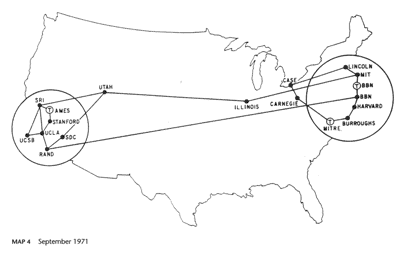Ray Tomlinson
Ray Tomlinson has passed away. Mainstream obituaries are going to focus on his being “the creator of email” or “the sender of the first email” or “the inventor of the @ sign in email addresses“.
All of which are true. He did send the first (networked) email. He did use the (otherwise mostly unused on TENEX) @ sign to separate user and host.
But he did a lot of other things with the basics of the modern Internet that are more important than the @-sign.
I just learned that Ray Tomlinson died this morning.
Ray Tomlinson had been at BBN since 1967. He’s best known for inventing the concept of sending email over a computer network and choosing the @ sign as the way to split the mailbox name from the host name.
But that’s a fraction of his amazing contributions to our field. Ray was one of a four person team that created TENEX, the first operating system to support virtual memory using paging. He wrote one of the first implementations of TCP and, when he found data being duplicated in the received stream, devised methods to ensure that sequence numbers were not duplicated that remain fundamental to TCP/IP implementations today. He worked on the first object-oriented distributed system and early multimedia email systems. And I’m sure I’m forgetting at least half a dozen other ways Ray made our world better.
— Craig Partridge
I knew and worked with Ray Tomlinson during the development of the ARPANET and its host protocols and benefited, as have billions, from his seminal work on networked electronic email. More important, from my personal perspective, was his work with Bill Plummer on the first PDP-10 TENEX implementation of TCP (and later TCP/IP). In 1975, he discovered that the TCP as specified in December 1974 had flaws that led it to fail to detect duplicate packets and, together with Yogen Dalal, developed the three-way handshake and initial sequence number selection method to solve this problem.
As Craig Partridge summarizes, Ray was a long-time and creative contributor to the Internet, operating systems, and many other highly practical applications in the computer science and communications domains. He was a self-effacing and humble man and extraordinary performer in our online world. I will miss his thoughtful, low-key and always helpful counsel.
— Vint Cerf
Years ago my daughter had an elementary school project about “inventions”. She loved emailing her friends so I contacted Ray and he agreed to be interviewed for her project. He was very kind and patient, answering every question in a way a kid could understand. He seemed like a very nice guy.
— /u/mazerrackham
“I see email being used, by and large, exactly the way I envisioned” — Ray Tomlinson
